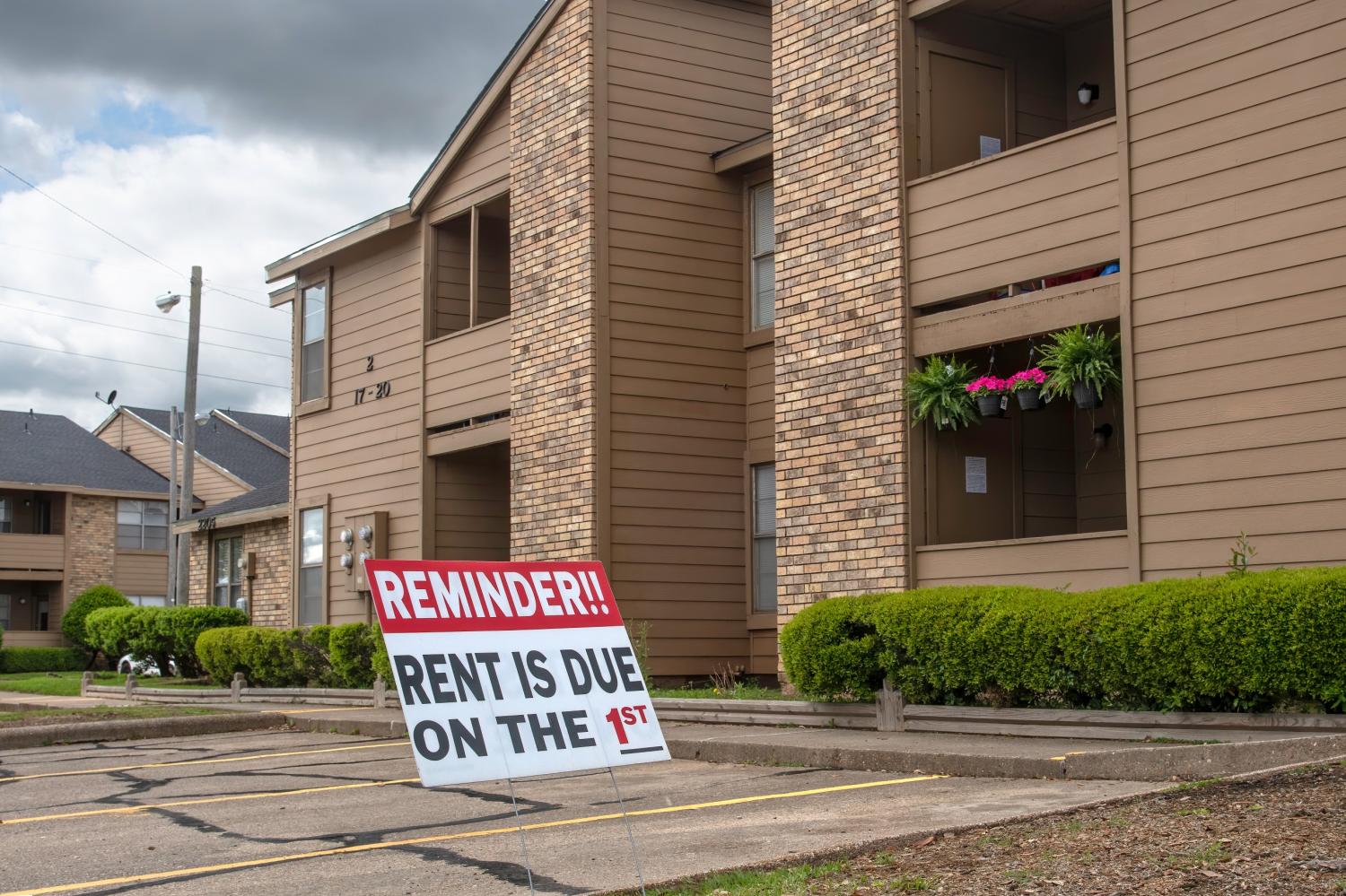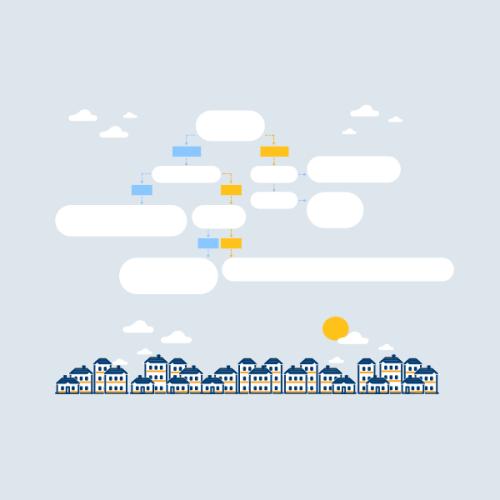Seven months into the COVID-19 pandemic, many households are running on fumes, financially speaking. The U.S. has 11 million fewer jobs than it did in February, with income losses hitting hardest among low-wage workers. Since April, housing advocates and scholars have been predicting an unprecedented number of evictions, as renters fall behind on monthly payments. How many renters are in financial trouble? How many will face eviction when current protections end? The truth is we don’t have great real-time data to help answer those questions.
Policymakers and the public receive high-frequency updates on labor markets, including weekly unemployment insurance claims and monthly jobs numbers. But federal statistical agencies don’t publish real-time data on housing distress, especially for renters. To help fill this gap, in April 2020, the Census Bureau launched the Household Pulse Survey. This weekly survey asks people about job losses and economic distress, including two key housing questions. One question is backward-looking: Did you pay your rent (or mortgage) this month? Respondents can answer yes, no, or deferred (for instance, homeowners who have received mortgage forbearance under the CARES Act are allowed to defer payments for up to one year). The second question is forward-looking: “How confident are you that you will be able to pay your next rent or mortgage payment on time?” Respondents can select one of four answers: no confidence, slight, moderate, or high confidence.
The question for policymakers is: Do the forward-looking responses about the ability to pay rent translate into actual behavior? And can this data be used to reliably estimate the number of people who will miss upcoming payments?
Predictions about paying rent should be taken seriously, but not literally
A new paper from Jeff Larrimore and Erin Troland sheds light on how responses from the Household Pulse Survey can be used to forecast how many households will miss rent payments—and a caution on how not to use the data. The authors’ key insight is that every household has some underlying probability of paying (or not paying) rent the next month. By comparing responses for the same household over time, they can calculate the probability of paying rent for each group of households expressing similar levels of confidence in the forward-looking question. Their analysis shows that while answers to the forward-looking question are strongly correlated with actual rent payment, the correlation is by no means perfect.
To determine the probability that households with given answers to the forward-looking question actually paid future rent, the authors looked at households who answered the Pulse Survey in both week five (May 28 to June 2) and week six (June 4 to June 9). (The Pulse Survey is conducted Thursday to Tuesday each week.) Of renter households who said in week five they had “no confidence” that they would be able to pay next month’s rent, about 36% reported the following week that they had in fact paid their rent (Figure 1). Among renters expressing “slight confidence” in week five, about 70% were able to pay June rent. (Larrimore and Troland conducted similar analysis for owner-occupied households with mortgages, which is not discussed here.)

How can these probabilities help policymakers predict future rent defaults? Because we know the share of renters who fall into each confidence level, we can construct a weighted average across all the groups to estimate the overall share of renters who will make subsequent rent payments. Table 1 shows the forecasted probability of paying July rent based on the May-June survey responses, as well as the share of renters reporting each confidence level to the forward-looking question (responses are from all weeks in June). Multiplying each probability by the percent of respondents and summing across all four groups produces an estimate that 82.4% of all renters would be able to pay July’s rent—very close to the actual share of renters who reported that they ended up paying July rent (81.5%).

Larrimore and Troland compare their results with another common approach to interpreting the Household Pulse Survey data. Several researchers have combined respondents who report “no” or “slight” confidence into one group, assuming that these renters are highly unlikely to make subsequent payments. That is the equivalent of assigning both of those groups a probability equal to zero; also, the assumption is usually implied rather than stated explicitly. By contrast, the assumption is that respondents reporting “moderate” or “high” confidence will pay future rent—an implicit probability equal to 1. Using this binary approach leads to a prediction that 68.4% of renters would pay July rent, substantially underestimating the true payment rate.
This analysis suggests that simple calculations using the historical probabilities for all four sets of responses can give policymakers a reasonably accurate forecast of how many households are likely to default on future rent payments. But the simpler binary approach—assuming that renters with “no” and “slight” confidence will all default—is not an accurate method of forecasting.
One possible reason for why renters who are doubtful of their ability to pay future rent do not all default is that many households who have lost income are cobbling together money from several sources. Media reports during the pandemic provides some useful insights: Renters are borrowing money from family and friends, running up credit card debts, skimping on food and other bills, or waiting on delayed approval of unemployment insurance benefits. Some families manage to come up with the money, but they don’t know very far in advance whether they’ll have enough. Most of these arrangements are not long-term strategies, and may in fact increase households’ liabilities. At some point, the money will run out and the debts will come due.
Policymakers need better real-time data on housing distress, especially among renters
Policymakers across the U.S., from Congress to mayors, rely on data to inform their decisions, such as whether to issue another round of economic stimulus or create a local rent relief fund. Making critical economic policy decisions without reliable, real-time data is like a doctor trying to treat a patient without being able to check her temperature or pulse rate. In both examples, making the wrong choice can have serious consequences.
Besides the Household Pulse Survey, much of our real-time data on renters’ vulnerability comes from real estate industry sources (including the National Multifamily Housing Council’s Rent Payment Tracker) or academic researchers (Princeton University’s Eviction Lab). While these sources help fill in gaps, they do not have data from a representative sample of households, landlords, or communities across the U.S. Put plainly, voluntary private data collection efforts are not a substitute for federal statistical agencies.
Existing housing market indicators published by federal agencies at relatively high frequency don’t do a good job at capturing the housing stability of individual households, especially for renters. Neither the Census Bureau’s monthly New Residential Construction series nor the Federal Housing Finance Agency’s House Price Index for owner-occupied housing provide much insight into whether renters are having trouble paying their bills. That is particularly apparent as the U.S. shows signs of a “k-shaped” recovery, in which affluent homeowners are working from home and benefitting from rising stock markets, while low-income renters are suffering disastrous income losses.
At a minimum, the Census Bureau should be authorized and funded to continue administering the Household Pulse Survey until employment returns to pre-pandemic levels. Meanwhile, policymakers at the relevant federal agencies—including the Department of Housing and Urban Development, the Federal Housing Finance Agency, the Census Bureau, and the Federal Reserve—should develop an ongoing system of real-time indicators to measure housing distress.
For renters who have lost jobs, falling behind on rent payments is only the beginning of an unpleasant journey—often followed by involuntary moves, formal or informal eviction, or even homelessness. Our current data systems are woefully unprepared to track any of these outcomes, especially for vulnerable populations who are less likely to respond to government surveys. Having better data to quantify how many households in which communities are experiencing housing distress would allow policymakers to better target assistance. Like testing for the coronavirus, choosing not to measure the problem won’t make it go away.







